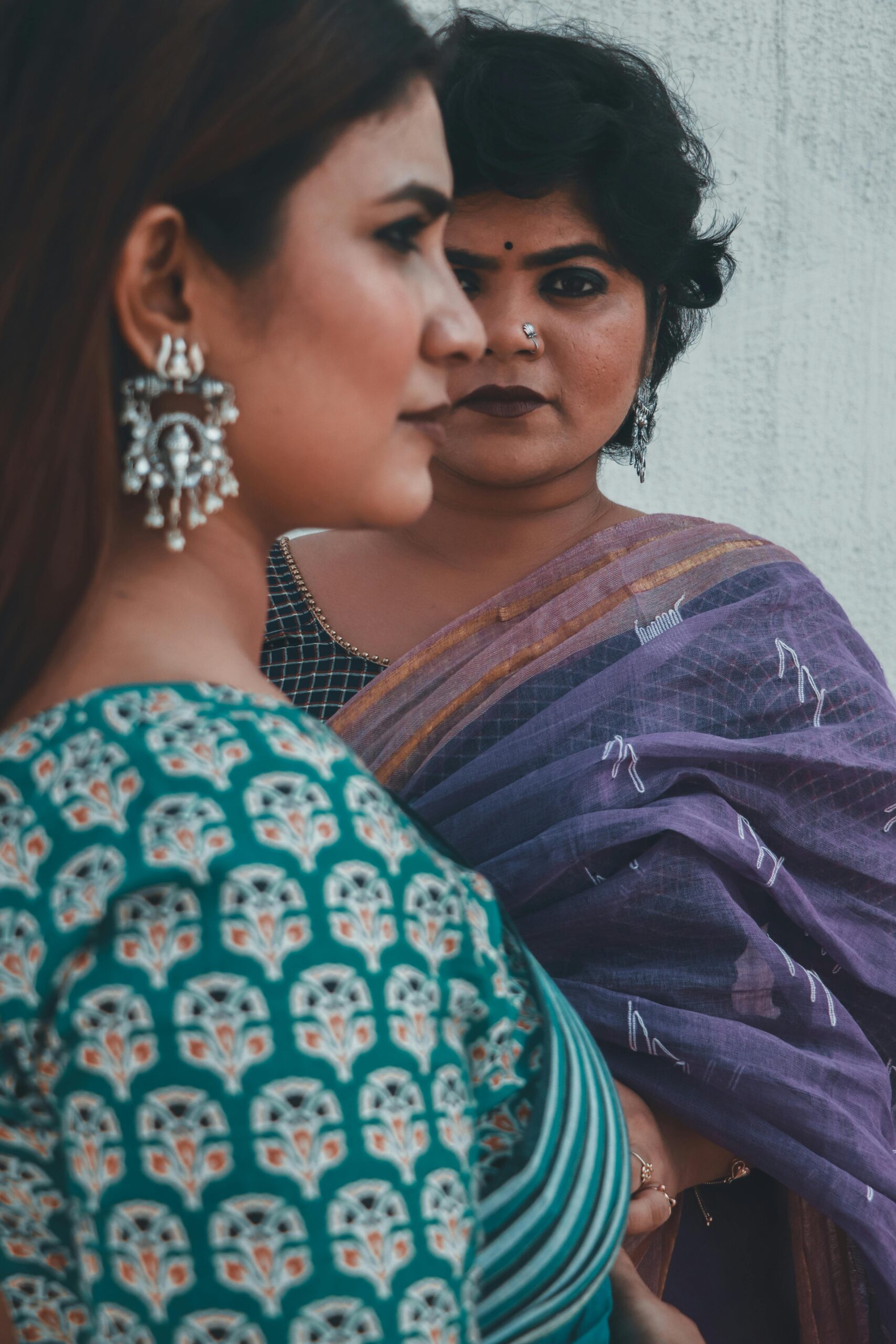
The Indian saree is more than just a garment—it’s a cultural symbol, a piece of heritage, and a timeless fashion statement. With over 5,000 years of history, the saree has evolved from traditional attire into a versatile style choice for modern women. Whether it’s a wedding, festive occasion, or a contemporary fashion shoot, sarees have become a global icon of elegant ethnic wear.
In today’s fashion world, Indian saree fashion beautifully blends tradition with modern design, offering a wide variety of textures, fabrics, draping styles, and embellishments.
Types of Indian Sarees: The Heart of Ethnic Fashion
1. Silk Sarees
Silk sarees
Silk sarees like Kanjeevaram, Banarasi, Mysore, and Tussar are the pride of Indian textiles. Known for their sheen and luxurious feel, silk sarees are a must-have in bridal trousseaus and festive wardrobes.
Pro Tip: Choose pure silk sarees with zari work for weddings and receptions to create a rich, regal look.
2. Cotton Sarees
Cotton sarees
Perfect for daily wear and office style, cotton sarees offer comfort without compromising elegance. Styles like Chanderi, Kota Doria, and Bengal Tant are breathable and ideal for summer.
3. Georgette and Chiffon Sarees
Designer sarees
For a contemporary, lightweight look, georgette and chiffon sarees with sequins, embroidery, or digital prints are trending. They’re popular for parties and evening events due to their drape and flow.
4. Handloom Sarees
Support local artisans by opting for handloom sarees like Pochampally Ikat, Sambalpuri, or Maheshwari. These sarees promote sustainable fashion and tell a story of India’s regional craftsmanship.
5. Bridal Sarees
Bridal sarees
Bridal sarees are ornate and heavy, often in deep reds, maroons, or gold. Apart from silk, modern brides also opt for velvet or organza sarees with intricate embellishments.
Latest Saree Trends for 2025
1. Pre-Stitched Sarees
Saree styles
For those who love convenience with style, ready-to-wear sarees or saree gowns are game changers. Easy to drape and perfect for cocktail parties or weddings.
2. Ruffled and Layered Sarees
Inspired by Western silhouettes, ruffled sarees are playful and perfect for younger fashionistas.
3. Pastel Shades and Minimal Embroidery
2025 is all about subtle elegance. Think blush pinks, mint greens, and off-whites with light sequin work or thread embroidery.
4. Belted Sarees
A modern twist to traditional draping, belts over sarees accentuate the waist and give a bold statement.
5. Fusion Drapes and Pant Sarees
Fusion sarees combine traditional draping with trousers or skirts—ideal for Indo-western events or fashion-forward looks.
Saree Draping Styles from Different Regions
: Saree draping
India’s regional diversity offers multiple saree draping styles:
- Nivi Style (Andhra Pradesh): Most common drape
- Bengali Style: Broad pleats and keys at the waist
- Gujarati Style: Pallu draped from the back to front
- Maharashtrian Nauvari: A dhoti-style saree with ethnic charm
- Coorgi Style (Karnataka): Pallu tied over the shoulder and tucked at the back
Style Tip: Experimenting with regional drapes can elevate your ethnic wardrobe and add unique character.
How to Choose the Perfect Saree for Every Occasion
1. Weddings & Receptions
- Opt for heavily embroidered silk or designer sarees.
- Bold colors like red, royal blue, emerald green, and gold work best.
- Pair with traditional gold or kundan jewelry.
2. Office Wear
- Choose light cotton sarees in subtle shades with minimal prints.
- Pair with high-neck blouses or formal jackets.
3. Festive Celebrations (Diwali, Navratri, etc.)
- Georgette, Chiffon, or Banarasi sarees in bright colors are perfect.
- Mix with oxidized or silver jewelry for a boho look.
4. Casual and Everyday Wear
- Handloom and linen sarees are breathable and stylish.
- Style with wooden bangles and juttis for an earthy appeal.
Designer Sarees & Indian Celebrities
: Celebrity saree looks
Indian designers like Sabyasachi, Manish Malhotra, and Anita Dongre have revolutionized the saree game. Their designs blend tradition with glamour, often worn by Bollywood celebrities like Deepika Padukone, Alia Bhatt, and Kareena Kapoor at red carpet events.
Looking for red carpet inspiration? Explore celebrity saree looks and recreate your favorite Bollywood style.
Saree Fashion Tips: Do’s and Don’ts
Do’s
- Choose the right fabric for your body type. Heavier fabrics suit tall frames, while light fabrics work well for petite figures.
- Invest in quality petticoats and blouses. Fit matters!
- Use accessories wisely. Belts, brooches, and waist chains can enhance your style.
- Experiment with blouses. High-neck, backless, ruffled sleeves—each adds personality.
Don’ts
- Avoid clashing too many colors.
- Don’t over-accessorize.
- Avoid over-starched cottons unless needed.
- Don’t follow trends blindly—adapt them to your comfort and body type.
How to Care for Your Sarees
- Silk sarees: Store in muslin cloth, avoid direct sunlight.
- Cotton sarees: Wash separately in cold water.
- Designer sarees: Prefer dry-cleaning.
- Folding: Refold every few months to avoid creasing.
Buying Sarees Online: What to Lo Saree shopping online
With so many e-commerce platforms offering sarees, here’s what to keep in mind:
- Check fabric details and care instructions.
- Look for return policies.
- Read customer reviews.
- Always check blouse piece inclusion.
- Choose trusted websites or labels for designer and bridal sarees.
Saree is Forever
The Indian saree remains unmatched in its elegance, diversity, and cultural value. From a grandmother’s treasured silk to a bride’s first designer drape, every saree holds a story. With new-age styles, fusion silhouettes, and celebrity influence, Indian saree fashion is more vibrant and versatile than ever.
Whether you’re rediscovering tradition or redefining it, the saree continues to be a statement of identity, grace, and fashion.
